Diamonds have fascinated rulers, rich people and, of course, thieves for centuries. The history of many of them is almost a ready-made script for a movie. How did the most beautiful ones get into the hands of the current owners and how much was paid for them?
As the Spanish writer Ramon Gomez de la Serna wrote, "a diamond is a piece of coal that has managed to turn its dreams into reality." Sounds cute. Before that happens, however, more than one "piece of coal" has thriller-like adventures.
Koh-i-Noor - "beyond any cost"
Today, the name "Koh-i-Noor" reminds many people not so much of a precious stone as a Czech company producing crayons. Meanwhile, the name of this company refers to the legendary jewel that adorns the cross on the British queen's crown. Currently royal insignia
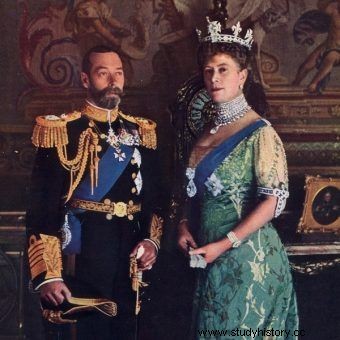
The diamonds emphasized the power of the rulers of Great Britain. In the photo, King George V with his wife Maria in whose crown Koh-i-noor shines. Her necklace is adorned with Cullinan I and her brooch adorned with Cullinan II.
um, and with him also the real Koh-i-Noor, or "Mountain of Light", rests safely in the Tower Museum. However, this was not always the case.
The history of finding the precious stone remains a mystery. Some people believe that it is the oldest diamond in the world, and its history dates back even to the third millennium BC. Other sources say it was excavated in the 13th century at Kollur in southwest India. The problem is that the local mine was not established until the 16th century…
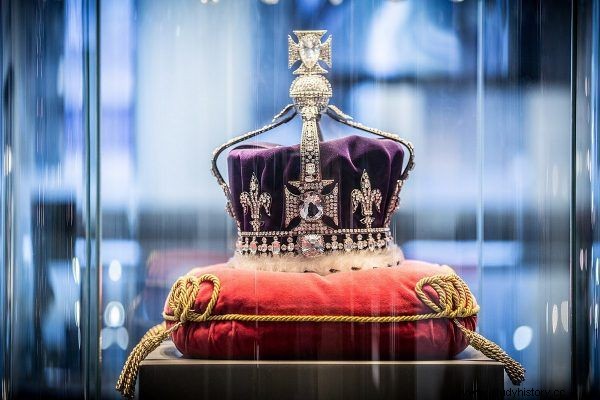
Koh-I-Noor now adorns the British crown. The photo shows a replica of a famous jewel.
Reports on the "Mountain of Light" come from the times of Babur, the ruler of the Great Mughals, who lived at the turn of the 15th and 16th centuries. He gave the priceless gem to his son Humayun. He also said that such a treasure cannot be bought. Either it is won in a battle that depends on God or it is passed on by its owners.
As the sources suggest, Humayun decided to use the latter option. He presented the stone to the Shah Tahmasp, ruler of Persia, in exchange for a cordial welcome. One writer of contemporary monarchs noted that to Persian jewelers, Koh-i-Noor was "above all costs." The value of Babur's diamond, unlike other valuables, was simply not determinable.
More than once the jewel passed from hand to hand. In the 18th century it fell into the hands of the Persian invader, Nadir Shah. Later he was taken to Kabul. Finally, he found his way to Lahore, the largest city in Punjab, a historic land today divided between India and Pakistan. It was there that the East India Company troops confiscated him for Queen Victoria.
Interestingly, before the valuable trophy was delivered to Europe, could have been irretrievably lost . On the final leg of the journey to the Islands, Koh-i-Noor's Medea ship fought a violent windstorm for 12 hours. The stone was finally presented to the Queen at Buckingham Palace on July 3, 1850.
Since then, the fate of "Mountain of Light" has had few turning points. Some emotions were brought by the modernization of the cut in 1852. In the 20th century, there was also a dispute about who is the real owner of the diamond. In 1976, the claimant Pakistan even made an official request to do so. Later, the peace of the stone was interrupted only for weighing, until it was finally placed in the royal crown.
Legend has it that whoever owns Koh-i-Noor rules the world. But perhaps this line of reasoning should be reversed? Ultimately, whoever has power also has the ability to get whatever he wants for himself.
Cullinan - 9 diamonds from one stone
Another unique diamond, Cullinan, was found in 1905 in a Premier mine near Pretoria in South Africa. At the time, it was over 3,100 carats and weighed over 620 grams. The condition of one of its walls indicated that it might have been even bigger originally.
The discovery of the stone can be perfectly summed up by the statement "darkest under the lantern". The mine director, Frederick Wells, performed a routine inspection of the mine. When he was underground, his attention was drawn to something that radiated a glow resembling the last rays of the setting sun. Nobody noticed it before him. At first it was hard for him to believe that a large piece of shard was indeed a diamond. At first he decided it was definitely a piece of glass. Fortunately, he was wrong. His find was named after all, after the owner of the mine - Sir Thomas Cullinan.
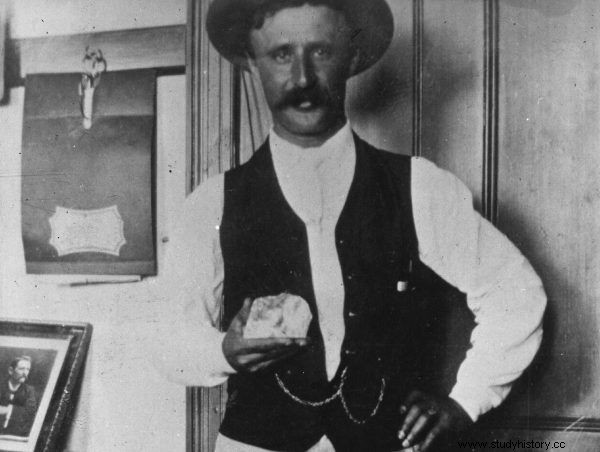
Frederick Wells holds the Cullinan diamond in his hand. 1905.
Of course, such impressive precious stones are not given to just anyone. The giant diamond was bought by the South African Republic in 1907. Cullinan, for which £ 150,000 was paid, was intended as a birthday present for King Edward VII.
The transport of the precious gem was apparently completely open. No effort was made to hide which ship he would travel to the Islands on. However, it later turned out that the whole action was organized for a show. The precious gift was sent not in a secured box, but ... in an ordinary package. Trust in the British Post Office of that time would have to be quite high. And rightly so - the parcel has reached its destination.
King Edward certainly appreciated the gift, but he wished to be divided into smaller pieces. As a result, as many as nine diamonds were created. They all belong to the royal jewels today.
The famous Dutch company of the Asscher brothers:Royal Asscher Diamond Company was chosen to execute the royal order. They examined the stone thoroughly for 10 months. Finally, on February 10, 1908, Joseph Asscher set to work. He used a specially prepared cleaver with an appropriate groove and a metal rod. Unfortunately, the task turned out to be more difficult than expected. The blade broke, the stone did not budge.
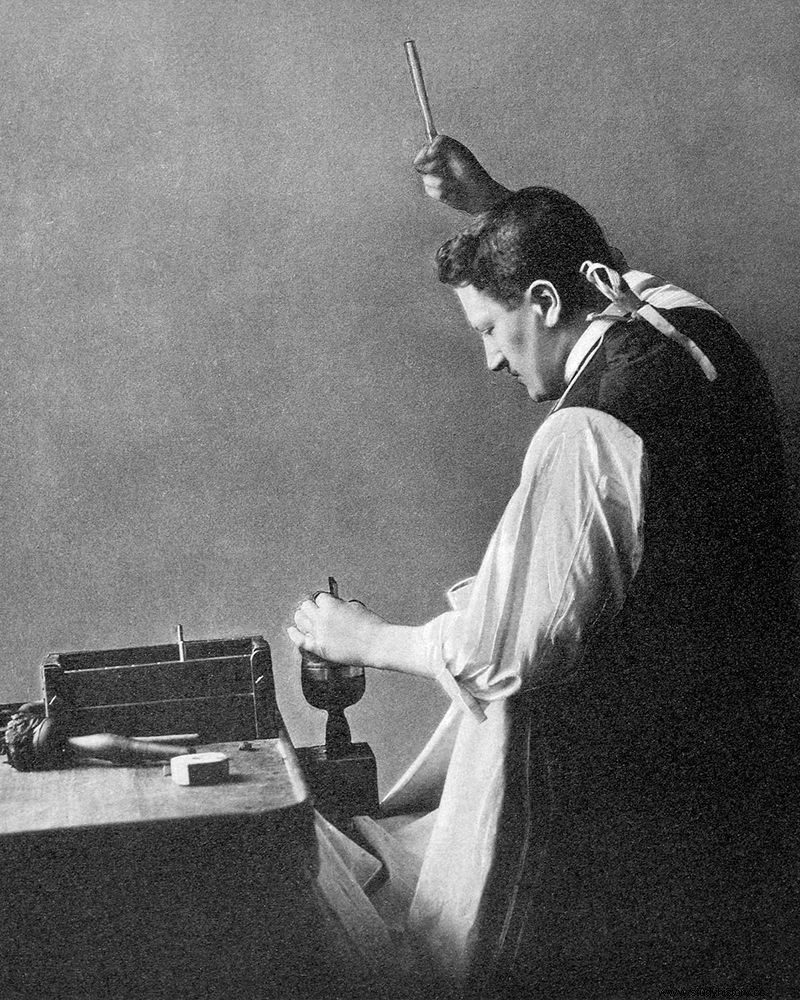
Joseph_Asscher cutting Cullinan.
Another attempt was made after three months. This time it worked and the diamond was split as planned. After doing this, Mr. Asscher passed out, which is hardly surprising. The largest of the nine diamonds made at that time, Cullinan I, is 530.2 carats. It adorns the British royal scepter and is worth, in fact, up to $ 400 million .
Hope, which has little to do with hope
The gem that has gone down in history as Hope was most likely found before 1668 in the Golconda area of India. Legend has it that comes from the eye of an Indian idol . If he is, there may be his twin brother somewhere in the world. It has not been found yet.
The blue diamond, 112 carats, was found during one of his journeys by Jean Baptiste Tavernier. Having no doubt that it was the largest known stone with this color, the man bought it and smuggled it to France. There, aptly sensing that record large stones and rulers liked each other the most, he sold it to Louis XIV. At his request, Hope was polished, which made it "only" a 67.5-carat diamond.
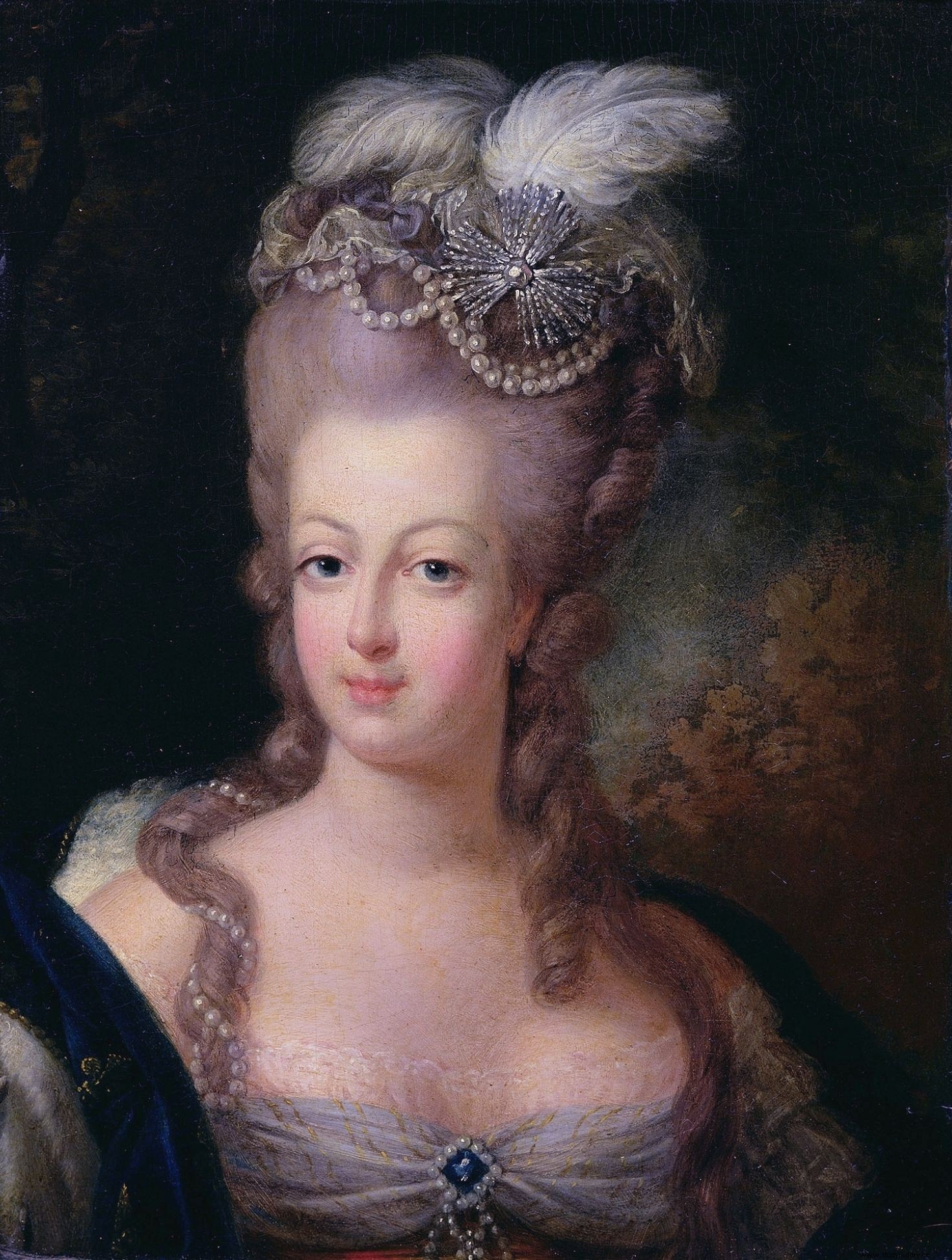
The blue gem was owned by Marie Antoinette among others.
The Sun King only came out with an expensive jewel once. He later handed it over to the Marquis de Montespan. Unfortunately, the official lover of the king and the mother of his seven children soon ceased to enjoy the king's favor. After her, a beautiful ornament, Marie Antoinette and her friend Marie-Thérèse-Louise de Savoie-Carignan. Both ladies ended up shortened by a head, but not as a result of the "Big Blue Diamond" curse, as the diamond was called at court and during the revolution.
The chaos that engulfed France also influenced the fate of royal valuables. In 1792 the stone was stolen. Only many years later, in 1830, a diamond of the same color appeared on the market. It was already differently cut and smaller, because "only" 44.5-carat. It was bought by an English banker, Henry Thomas Hope, from whom he took its name. He has insured his treasure for a million dollars. However, the new acquisition did not bring happiness to his successors. The Lord's heir, Francis Pelham Clinton Hope, managed to go bankrupt even with such a decline.
The next owner of the stone was Abdul Hamid II, the Sultan of the Ottoman Empire. He paid $ 450,000 for it and gave it to Subaya, one of his four wives. Unfortunately, she started an intrigue against the Sultan who sentenced her to death.
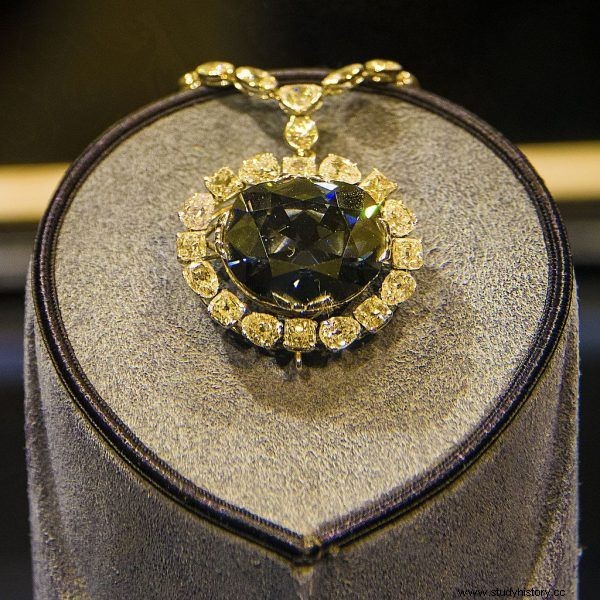
Currently, Hope can be seen at the Natural History Museum in Washington, DC.
Later, Hope went to the American Evalyn Walsh McLean, the owner of a huge fortune. She wore it proudly at her famous parties. After it, it was taken over by Harry Winston, a famous American jeweler. He enjoyed it for ten years, and finally donated it to the Smithsonian Institution in Washington, where it can be admired today. It is currently the largest dark blue diamond in the world. Its value can be as high as $ 350 million. If it were for sale, of course.
$ 100 million for the centenary of the diamond mine
A diamond named De Beers Centenary was presented on May 11, 1988 for the 100th anniversary of the De Beers diamond mine. It was found in 1986 at the Premier mine using X-rays. It has been classified as class D, which means it is completely colorless. Such stones are extremely rare. No wonder he was insured for $ 100 million.
The pride of the De Beers mine is also distinguished by its size. Its original weight was as high as 599 carats. The unique diamond was polished by a selected group of people under the watchful eye of an outstanding jeweler, Gabriel Tolkowski.
In Johannesburg, a special underground laboratory was set up for the work on De Beers Centenary. There were no vibrations or even the slightest fluctuations in temperature - all so as not to interfere with the cutting of the miracle of nature. The guards also took care of the safety of the entire process. The resulting brilliant retained its natural pear-shaped shape, but its mass was reduced to "only" 273 carats, or almost 55 grams.
The gem was first presented to the public at an exhibition in Antwerp in 1991. Then it was loaned to the Tower of London for several years. Unfortunately, it is not known if and to whom it was sold, let alone where it is now.
Bought twice, bought once
The legendary "trinkets" mentioned so far are beyond the reach of mere mortals. And not only because of the price - they are simply not put up for sale. From time to time, however, unique diamonds appear at auctions. So they are "available for purchase", of course at an exorbitant price.
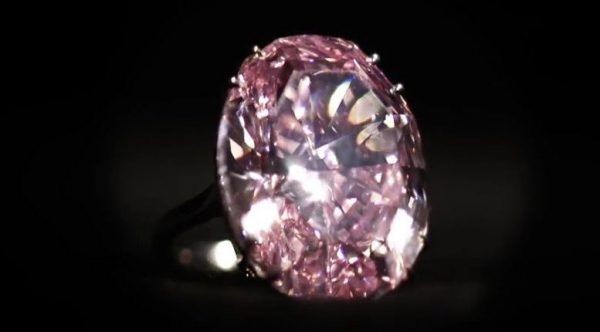
Pink star. Still from a promotional film prepared by the Sotheby's auction house.
The highest bidding price so far has been achieved by the Pink Star. This distinctive plum-sized stone was sold in 2017 at Sotheby's auction house for over $ 71 million. Interestingly, four years earlier, in 2013, the Star had hit an even higher price of $ 83 million. It probably exceeded the buyer's capacity, because the winner of the auction, Isaac Wolf, never paid for the jewel.
The astronomical amount may be due to the fact that it is the largest pink diamond ever found. It was found in South Africa in 1999. It was then 132.5 carats. After two years of grinding by Israeli businessman Beny Steinmetz, a diamond weighing 59.6 carats was created. The stone also took its first name from him:Steinmetz Pink. Only later was it renamed CTF Pink Star, in honor of the new owner, Chow Tai Fook Enterprises trading among others jewelry.
Inspiration:
This article was inspired by the latest novel by Maciej Siembieda, entitled Place and Name , Capital Letter 2018.
